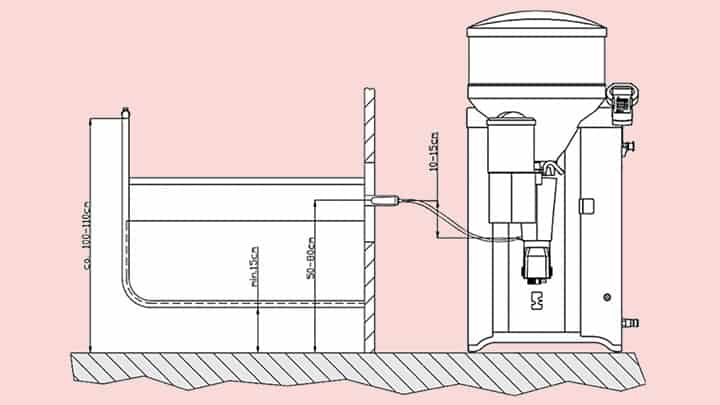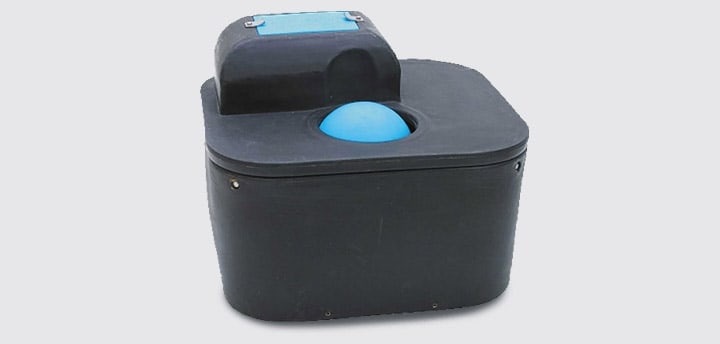Cold weather had descended upon the northern hemisphere. One’s definition of winter can vary tremendously, but it is generally accepted that cold weather presents challenges for both equipment, facilities, calves and the people managing calves. Read more…
Winter feeding tips for the autofeeder managed calf

Cold weather had descended upon the northern hemisphere. One’s definition of winter can vary tremendously, but it is generally accepted that cold weather presents challenges for both equipment, facilities, calves and the people managing calves.
Winter management of calf feeders.
We will make the assumption that the weather will be below freezing for a significant part of the day. In such cases there should be some housing provided for the feeder and sufficient heat to assure that the temperature stays above freezing at all times. However, in most cases that calves are housed in an unheated facility. Here’s a few tips to keep things flowing.
- Keep the hoses from the feeder to the nipple as short as possible, even if there’s a pump to help move milk from the feeder to multiple feeding stations.
- If you don’t have a quattro or IFS pumps make sure that the hoses drain back to the feeder as shown in the figure below. Mount the teat 4 to 6” (10-15 cm) higher than the mixer outlet. The teat should be 20 to 30” (50-80 cm) above the platform. Mounting the teat lower as it represents a more natural nursing position.

Without quattro or IFS pumps make sure that the hoses drain back to the feeder.
- With milder winter conditions, surround the hose outside of the feeder room with foam insulation. In colder weather conditions, consider using heat tapes that are used during the coldest temperatures. (<25F, 4 C).
- Keep hoses away from cement floors as they will accelerate freezing conditions of milk residues in the hoses.
- Foerster Technik offers frost-free feeders or a kit to make the feeder frost-free.
- Although calves may consume more milk or milk replacer through an autofeeder system, supplemental water is very important for encouraging starter intake and maintaining calf health. Supplemental waterers should be cleaned daily and heated. Waterers such as those shown in the illustration are not recommended for calves less than 6 months of age. These systems are not well suited for preweaned calves and they will limit water intake (especially in winter) and are difficult to keep clean.

Ventilation of the autofeeder facility.
Ventilation of any facility where calves are raised indoors is critical to success. Most systems use curtain side walls which enable the manager to optimize use of natural ventilation. However, all systems must be designed to enable introduction of fresh air into the facility for 24 hours a day for 365 days of the year. See the following link for information on calf facility ventilation. https://thedairylandinitiative.vetmed.wisc.edu/home/housing-module/replacement-housing/calf-barn-ventilation/
Winter calf management.
The autofeeder system is very well suited from the calf’s perspective.
- During the coldest weather the calf’s maintenance requirements can increase dramatically. This is especially true for the smaller calves that lose more heat due to the larger proportion of surface area. This seems to be contrary to logic, but smaller calves need proportionately more milk or a milk replacer with more fat during the winter than larger calves. Limiting liquid diet intake to 8L may not be adequate.
- The 40fit or ad lib feeding program pioneered by Foerster Technik is especially well suited for winter feeding as calves can drink milk or milk replacer if needed during cold weather. The number of days on the ad lib feeding depends upon severity of cold weather. When environmental temperature is continually below freezing, continue this program for at least 30 to 40 days. At this time, we typically recommend decreasing milk intake from ad lib (or 12 L) to 8L over a 4 day period. Continue offering 8L/day for 10 days and then gradually wean calves by reducing the daily allotment from 8 to 2L over 10 to 14 days. The body condition of calves will be a great indicator of the need to begin reducing the liquid diet.
- There may be some concern about feeding large volumes of milkand delaying starter intake. However, ad lib fed calves will typically be taller with more body condition and growth at a younger age. Housing in group systems also encourages earlier starter grain intake than in calves housed individually.
- Recommended autofeeder meal sizes are a minimum of 1.5L and a maximum of 2L for the first two to three weeks of life. Maximum meal sizes can be increased to 2.5 to 3 L as calves get older and larger. Limiting meal sizes at younger ages prevents calves from “gorging” at any one meal and potentially creating digestive stress.
- The solids level for farms using milk replacer should be 150 to 175g/L. This would be the equivalent of 13% to 15% solids.
- For optimum benefit of the ad lib feeding program, calves should have a very vigorous feeding behavior. Pay special attention to maternity and newborn calf care.
- Early consumption of at least 4 L of colostrum provides not only immune globulins but also a source of energy. Delaying colostrum intake means the calf needs to draw upon a limited supply of body fat for energy during cold weather.
- Limit heat loss by the newborn calf by assuring that the calving area and housing is dry and deep bedded with straw.
- Apply calf blankets as soon as the calf is dry.
Calf feeding personnel in the winter.
Although calf hutches have been promoted as the “gold standard” for preweaned calf housing, I doubt that the people feeding calves would agree that it’s a pleasure to feed calves when it’s below freezing, snowing and the wind is blowing. In such situations the goal for the feeder may be to see how quickly they can finish! The well-designed calf autofeeder facility can provide a desirable environment for workers to focus on calf care and allow the calf access to heated waterers and a dry well drained bedding area and with access to feed more than 20 h/day.
As with any system, calf care during the winter requires adjustments in management strategies. The same key points apply to achieving success regardless of the system:
- Excellent newborn care to include early consumption of good quality colostrum
- Providing sufficient intake of high-quality milk or milk replacer early in life to encourage growth during the first weeks of life.
- A well-drained and ventilated facility with adequate bedding to optimize utilization of their liquid diet and encourage early calf starter intake.
- Great conditions for personnel caring for calves so that they can focus on the calvesand enjoy their work.
Jan Ziemerink – Foerster Technik
Dr. Bob James – Down Home Heifer Solutions, LLC
